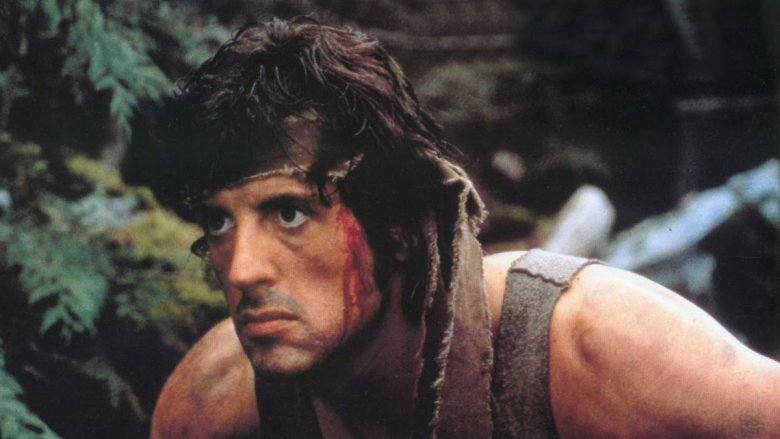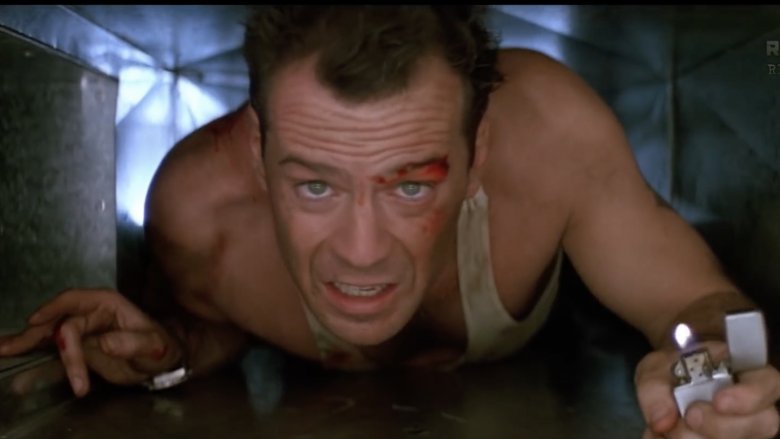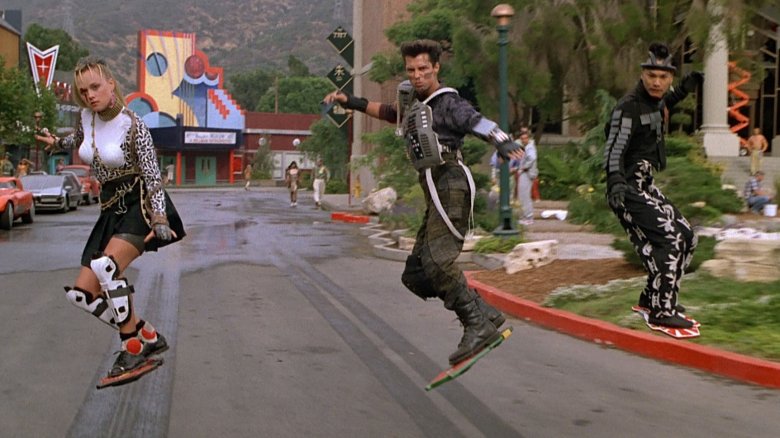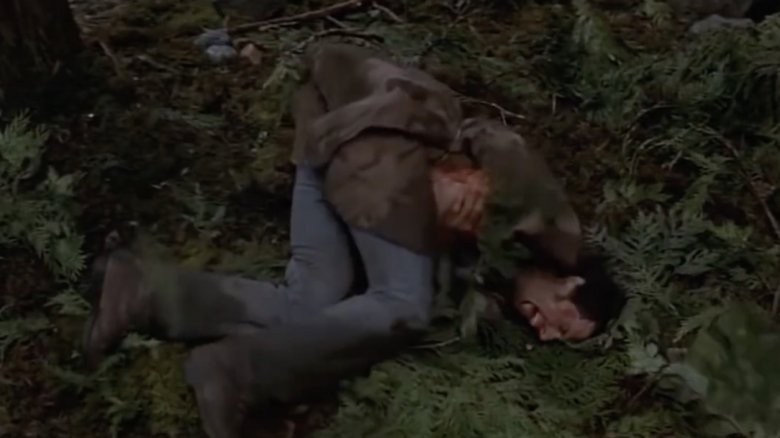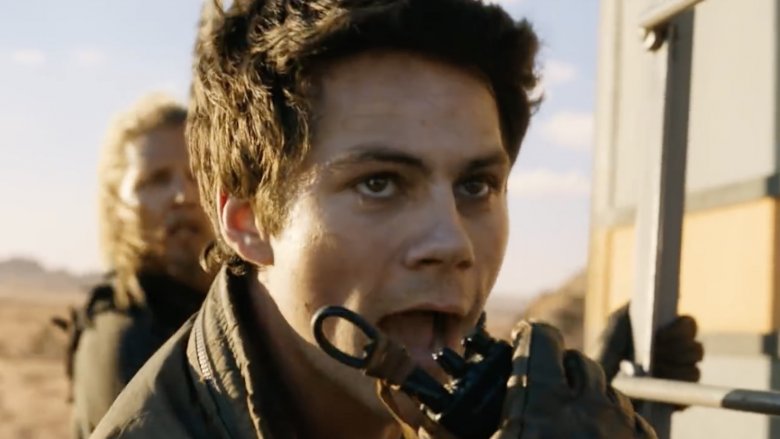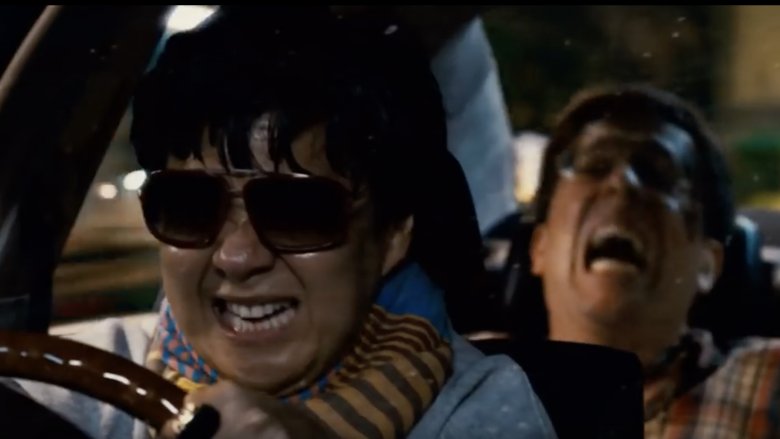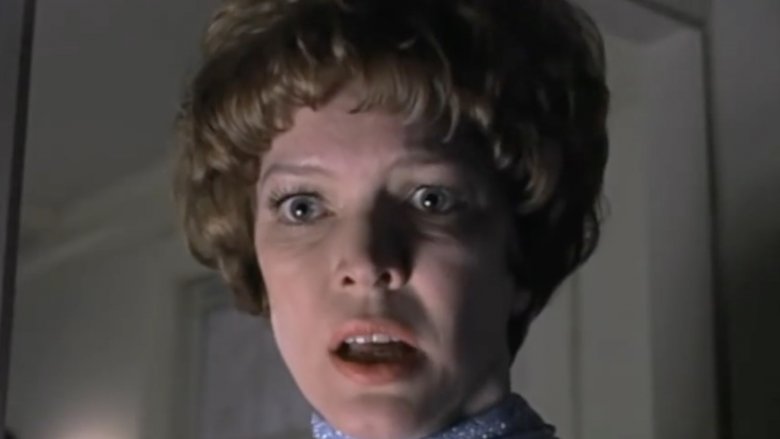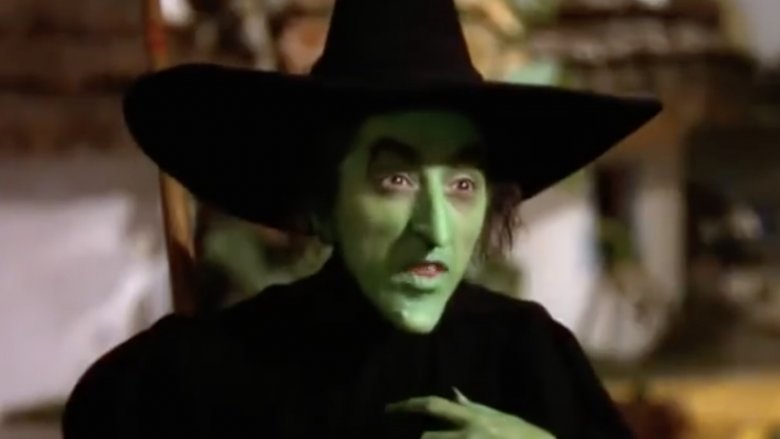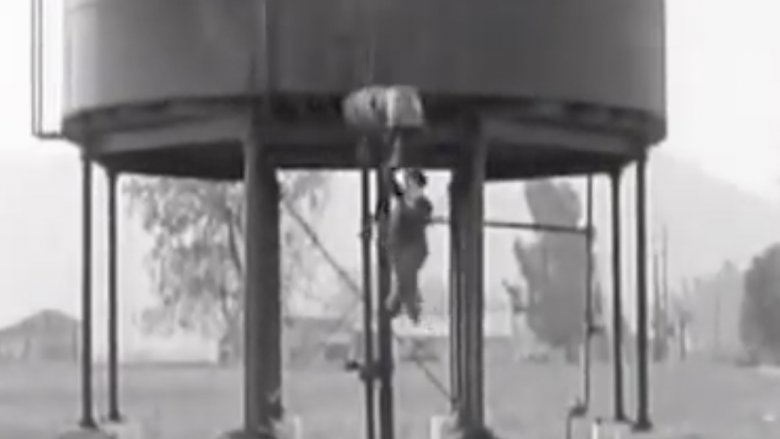Stunts Gone Wrong That Ended Up In The Movie
Making a movie — particularly a big-budget, eye-popping, senses-shattering blockbuster — is nothing short of a miracle. There are so many things that a film's different teams have to get right. Actors must deliver their lines just so, the sets and lighting have to look real, and the stunts should look believable and feel death-defying. The latter is probably the trickiest element to nail: even in this day and age, where filmmakers can create entire worlds with CGI and other visual effects technology, there's nothing quite like a practical, good-old fashioned stunt. Talented stunt performers risk their lives to get the shots that often wind up being the highlight of the entire movie.
While correctly executing a stunt rides a fine line between success and disaster, stuntmen and stuntwomen don't always pull off the moment exactly as planned. Nevertheless, the cameras are rolling and sometimes the footage captured is so exciting that filmmakers simply have to keep it in the final cut of the film. (Or the stunt ended in actual pain and misery ... so more takes weren't possible.) Here are some really scary movie moments where the fear and danger were real.
Just talkin' 'bout airshaft
Part of the charm of Die Hard, and what makes it such a classic, is its premise: John McClane (Bruce Willis) is a cop, but essentially a regular guy, rising to the occasion to thwart a massive terrorist plot threatening Nakatomi Plaza. In real life, Bruce Willis was also basically a regular guy, not yet an action movie stud, best known as the star of the romantic comedy series Moonlighting. As such, the services of a stuntman were required for the film's wonderful and exciting set pieces.
One such moment: McClane leaps into an elevator shaft. Willis' stunt double was supposed to grab onto a vent ... but he missed by quite a bit and latches onto another one. The bit speaks to McClane's character: normal guy out of his league trying to be brave and save the day, and it makes the viewer jump a little. That's why the filmmakers kept it in.
Hoverboards aren't all they're cracked up to be
In one of the most audience-delighting scenes in Back to the Future Part II, four members of Biff's gang chase Marty McFly (Michael J. Fox) and crash through glass on the famous Hill Valley clock tower. As the stunt was planned, all four stunt performers were going to be outfitted in harnesses and suspended from a crane, which would provide enough momentum to send them crashing through the glass windows. Then, a crew member was supposed to press a button on a remote control, sending them descending to the safety of airbags below. After a couple of test runs went wrong, stuntwoman Lisa McCullough bowed out for safety concerns, and stuntwoman Cheryl Wheeler stepped in.
The cameras rolled, and the stunt performers "flew" through the air. But Wheeler's rig didn't work correctly. She flew off-course, and instead of busting through a candy-glass window, she hit a pillar on the outside of the building. Adding injury to injury, that one tech remotely released her, sending her crashing 25 feet ... onto concrete.
Wheeler was severely injured and sued the studio behind Back to the Future II, but nevertheless, the accident footage is in the film. When the gang crashes through the glass doors, Wheeler is visible falling onto the sidewalk.
Rambo vs tree
The action in First Blood, the first in Sylvester Stallone's Rambo franchise, is so raw and visceral that it's sometimes difficult to watch. (That sensibility plays in with the film's story of a deeply troubled, post-traumatic stress disorder-affected Vietnam War veteran.)
One scene in particular looked like it must have been painful for Stallone to shoot ... and that's because it was. While on the run from the military officers charged with capturing and quelling him, Rambo jumps off a cliff and falls through some trees and he comes up hard against some of their mighty branches. Stallone performed one take of the scene, and then dutifully did one more. Director Ted Kotcheff requested another, but Stallone politely declined. He was a little uncomfortable, having broken a rib on the branch on take two. "It was pretty easy to act out the pain," Stallone quipped on the First Blood DVD commentary track.
There isn't a cure for death, though
Dylan O'Brien made a name for himself with The Maze Runner, a trilogy of science-fiction films based on the popular series of dystopian young adult novels. O'Brien happily did his own stunts for the films. "I love adding that physical aspect to a role," he told USA Today. "It's tough but it's great."
Is it though? Because on the third day of filming the third Maze Runner entry, The Death Cure, in 2016, a scene involving a car went awry. O'Brien reportedly suffered a concussion, a facial fracture, and brain trauma. Production on the film shut down for months while its star could recover.
When O'Brien returned to the set, director Wes Ball had a delicate question for the actor: Would it be alright to use the footage of that perilous injury in the film? "My response actually was like, 'I need you to, in a way. I would be more heartbroken than if it just went to waste," O'Brien told USA Today.
The hang-out from The Hangover led to a devastating injury
The Hangover Part II re-captures a lot of the ridiculous bro magic from the first film, but switches the setting from Las Vegas to Thailand. In a high-speed car chase scene, a terrified Stu (Ed Helms) hangs from a car window. It was a relatively simple shot, and some of the footage was obtained with the use of a stuntman. Australian stunt performer Scott McLean actually drooped out of the moving vehicle ... but the stunt driver of the car messed up. They failed to swerve at the right moment, and McLean's head collided with a truck.
McLean was in a coma for weeks, and doctors initially thought he'd never walk or speak again. Fortunately, he did eventually start physical therapy and the long road to recovery, in spite of sustaining a brain injury that likely ended his stunt career. Not only did the scene in question wind up in The Hangover Part II, but it made it into the film's trailer, too.
The power of the wire guy compels you
When we think of actors who proudly do their own stunts, we think of Dwayne "The Rock" Johnson, Vin Diesel, or Tom Cruise. Well, Ellen Burstyn is arguably tougher than any of those guys.
The role of Chris McNeil, mother of an evil-possessed child in 1973's The Exorcist, was quite physically taxing. In one scene, the supernaturally-powered little girl (Linda Blair) forcefully throws her mother to the ground. Because the scene was shot relatively close-up, a stunt performer wasn't possible: Burstyn had to take the hard fall herself, helped along with a wire and an off-camera wire operator.
On take one, Burstyn indeed hit the ground, painfully. Then director William Friedkin asked for another take. "And I said, 'Billy, he's pulling me too hard,'" Burstyn told HuffPost Live. "And Billy said, 'Well it has to look real.' And I said, 'I know it has to look real, but I'm telling you, I could get hurt.' And so he said, 'Okay, don't pull her so hard.'" Nevertheless, on that next take, Burstyn says the wire operator "smashed me into the floor." Per Friedkin's wishes, the take does "look real," because Burstyn got really hurt, really bad. She says she suffered permanent spine damage from the incident.
A wicked injury from The Wizard of Oz
The Wizard of Oz is full of dazzling moments, and the fantastical, colorful, effects-heavy film (impressive, considering it was released in 1939) became an all-time classic. One of the biggest comes shortly after Dorothy arrives in the merry old land of Oz, specifically Munchkinland. Margaret Hamilton, in an unbridled performance as the Wicked Witch of the West, was supposed to disappear into thin air, thanks to some obscuring smoke and pyrotechnics, as well as a well-placed trap door for Hamilton's physical exit.
But when cameras were rolling, the door didn't work properly, meaning Hamilton literally faced a bunch of fireworks. Hamilton endured such severe burns to her face and hands that she needed six weeks to recover; even then, she had to wear green gloves on her hands because the skin there was still too tender for makeup. At the very least, director Victor Fleming told Hamilton that they didn't need to reshoot the Munchkinland exit scene: the one they shot, the one that led to her injuries, looked just fine.
When Buster busted his neck
One of the silent film era's biggest stars was Buster Keaton, who was especially good at physical comedy. In 1924's Sherlock, Jr., Keaton plays a projectionist who longs to be a detective. He falls asleep in his booth one day and dreams he's Sherlock, Jr., the main character in a melodramatic movie called Hearts and Pearls or The Lounge Lizard's Lost Love.
In one scene, he runs along the top of the cars of a moving train. When he gets to the end, he grabs for a rope and holds on for dear life as the train speeds underneath him and he slowly descends to the ground ... except that the rope is attached to a water spout, and it soaks him as he lowers. The force of the water is so strong, it knock's Sherlock's head into a rail. Ha-ha, he got hit in the head! That, apparently, was not planned. Keaton experienced massive headaches for days after the stunt. Years later, he underwent a medical exam for an unrelated matter and X-rays showed that he'd once fractured his neck — evidently on the set of Sherlock, Jr.
